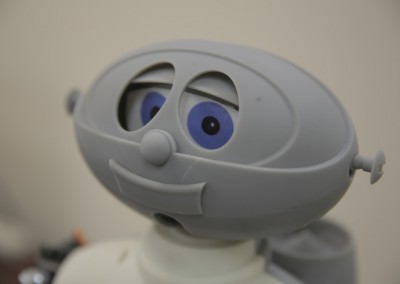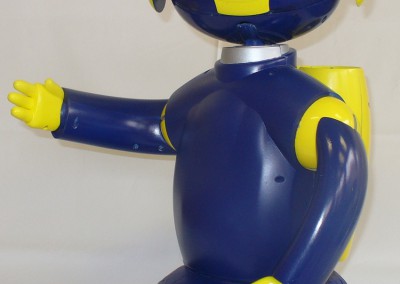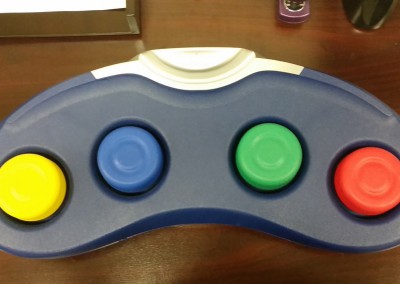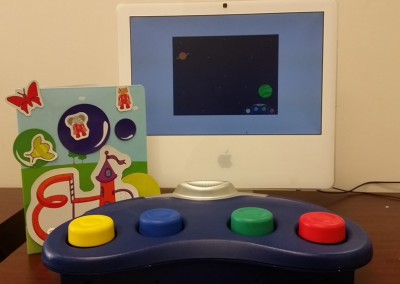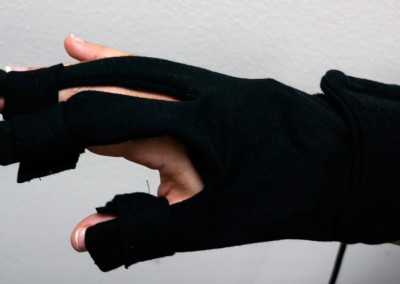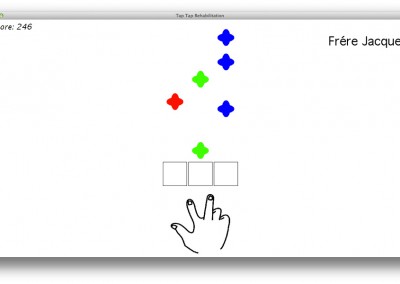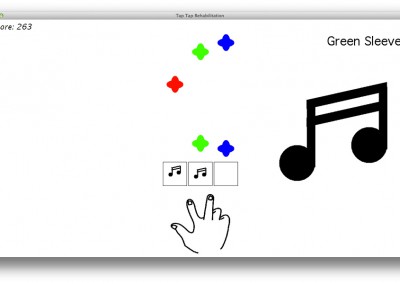Biomedical Assistive Devices 
Our experience with biomedical assistive devices includes supportive, educational, and rehabilitative technology development. Our research-based hardware and software helps enhance the lives of individuals with and without disabilities.
CosmoBot
CosmoBot is a prototype interactive robot for children with and without disabilities to promote educational and therapeutic activities. CosmoBot has been tested with children with a range of abilities including children with Autism Spectrum Disorders, Down syndrome, cerebral palsy, muscular dystrophy, apraxia, neurodevelopmental disorders, and language developmental disorders. The Mayo Clinic in Rochester, MN used CosmoBot to aid children with disabilities in physical therapy through an NIH funded project in 2010.
Funders of Cosmobot research have included: National Science Foundation (NSF), National Institutes of Health (NIH), and the Department of Education. CosmoBot was most recently redesigned in 2013 to include additional degrees of motion in the arms and an improved control system.
Cosmo’s Learning Systems
Cosmo’s Learning Systems is a unique group of learning tools for children ages 2-to-8 years, both with and without disabilities. Cosmo’s Learning Systems includes Mission Control™ and Cosmo’s Play and Learn™ software. Mission Control is a unique interface that allows children to interact with a computer system without the use of a standard keyboard and mouse. When combined with the Cosmo’s Play and Learn software series, it teaches early learning concepts to a wide range of children with a variety of needs. For children with disabilities, Cosmo’s Learning Systems is an excellent motivator for physical, occupational, speech/language, and recreational therapy practices and special education segments of the rehabilitation market.
Mission Control is an alternative computer input device that allows children who do not use a standard keyboard and mouse to interact with a computer system. This provides young children with and without disabilities the opportunity to make use of educational and therapeutic software. Mission Control provides intuitive interaction during therapy and education for children of all abilities. This multi-modal device is customizable for each child and offers proportional control tailored to the amount of pressure a child can place on the switches. It was developed through user-centered feedback from children, educators, and therapists.
Stroke-Rehab Glove
AnthroTronix developed an instrumented glove to assist stroke patients with their rehabilitation programs. The glove is a lightweight, right-handed, three-finger system with sensors near the tips of the fingers and on the back of the hand. Rather than a traditional glove worn over the fingers, the stroke rehab glove is placed over the top of the hand and attached with velcro straps. This allows the glove to be easily placed on the hand independently by the subject. Through the use of this glove, patients can better regain the fine motor control that may have been lost due to brain damage and muscle weakness caused by a stroke.
Tap-Tap Rehabiliation
Tap-Tap Rehabilitation is a therapy software game designed for use with the instrumented stroke rehab glove. Users tap their fingers against any surface in response to music and visual cues indicating when to tap and what finger to tap with. The system specifically targets the recovery of fine motor control in individual digits, while remaining an enjoyable, interactive experience for the user.
Learning For Children
Learning for Children-Exploration software helps parents and teachers determine what supports their children need to be successful in school. The software provides fun, educational activities for children ages 3-7 years to play while simultaneously evaluating student performance. The data collection may be used to inform teachers and parents of potential challenges related to neurodevelopmental issues such as Autism Spectrum Disorder (ASD), developmental language disorders, or developmental delays. Activities focus on a variety of learning objectives including auditory discrimination, logic, reasoning, visual perception and concept formation.

